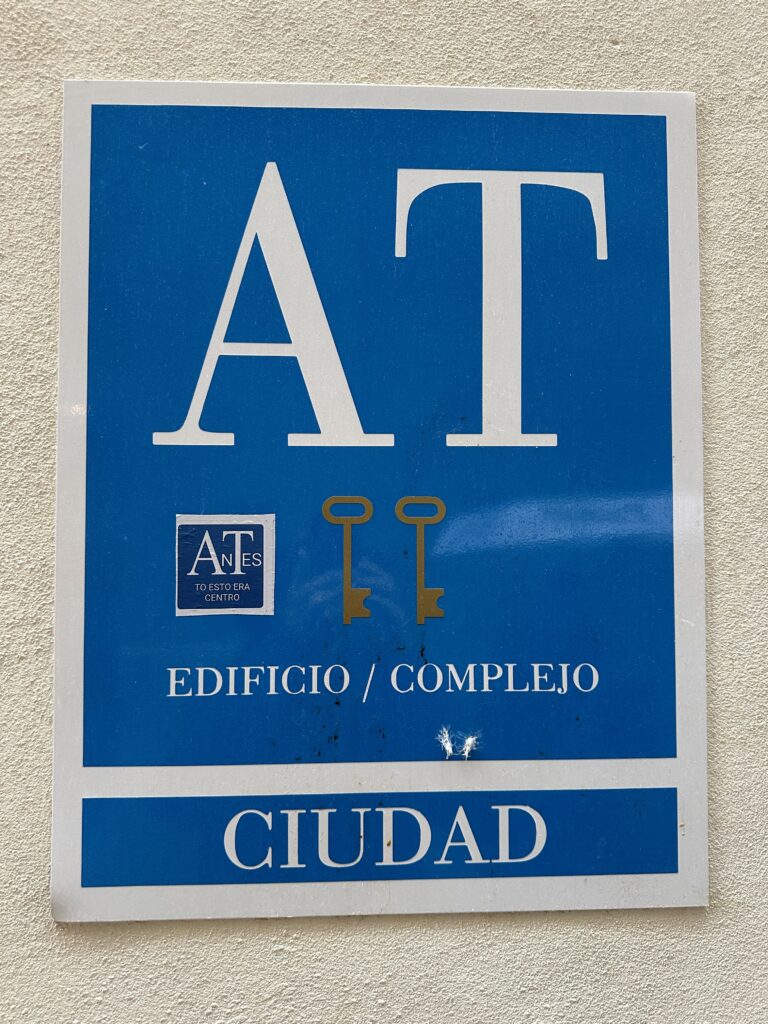

When we were planning this trip and exploring where to spend Easter in Andalucia, a region of Spain famous for its Semanta Santa (Holy Week) processions, Malaga was one of the cities recommended. Unlike other Andalusian cities, where the celebrations are sad and dark, Malaga is known to celebrate Semana Santa differently, with Malageños cheering as the processions pass. Having moved up our trip, we had now been witnessing Easter preparations in Malaga , Cordoba and Seville, and experienced Semana Santa processions in Cadiz. It was good to have a better understanding of these centuries-old celebrations, and how they vary from one city to another. Malaga is unique in its tradition of releasing a prisoner on Holy Wednesday. This practice dates back to 1759, when inmates in a Malaga prison discovered Easter processions would be cancelled due to a plague outbreak. In response, they escaped from jail and carried Jesus’ image through the streets before returning to their prison cells.
While the rainy weather continued to disrupt celebrations, we were able to see some of the Semana Santa processions in Malaga, which were certainly larger and more spectacular even than those we had seen in Cádiz . There are often two “thrones” or cajillos (not called pasos here) in a procession here. The first throne contains an image of Christ or sculpted scene of the Passion, and the second one, an image of the Virgin Mary, known as dolorosa. The thrones of Christ are adorned with flowers, the Virgin’s throne is covered by an ornate canopy. We arrived back too late to view the famous procession escorted by the Spanish Foreign Legion, but did see the Sagrada Cena procession from the comfort of our cafe table along the route. The procession was long and large, with the two huge thrones carried by more than a hundred men each. The rest stops for the nazarenos were frequent and the effort was palpable. On Good Friday, we watched the solemn Calvario procession coming from outside of the old city, again with two very large thrones. By evening, the afternoon rain had tapered off and we were able to see yet another procession from the balcony of our apartment. Pictures are in a subsequent post.
In between the celebrations of Semana Santa, we visited three of the many museums in the city. The Museo Carmen Thyssen contains a fine collection of mostly 19thC works by Spanish artists, predominately Andalusian. It was fascinating to see the works from Spain painted during the impressionist era, as well as depictions of places that we had seen in Andalucia. There was also a current exhibition of Spanish Figurative Art from the 20thC which showed the evolution of art as it was shaped by developments in Spain before and after the civil war.



A second current exhibition was of selected photographs by Man Ray.
In the Museo Picasso Malaga, we were treated to a wonderful collection of Picasso’s paintings, sculptures and pottery. Finally, we enjoyed an interesting exhibit in the Malaga Centre de Pompidou examining the tensions in our environment, particularly those between urban and rural life. Selections from the Picasso and Centre Pompidou exhibits are in a subsequent post.
The rain over Saturday and Sunday was heavy and relentless. We found shelter in the Cathedral for high mass on Easter Sunday. Lois wanted to experience an Easter Sunday mass and was intrigued to find that the high mass was actually a sung Latin mass, although not a version Lois recognized from her childhood, and the rest of the mass was conducted in Spanish. While Lois felt slightly nostalgic hearing the Latin mass sung (by a skilled choir), she was disconcerted to later read about a “Latin mass” movement among ultra- conservative Catholics.
In Spain we have benefited from the ability to rent apartments for a few days at a time but through an article in The Guardian discovered that issues of affordability and availability for residents are present here as at home. We noticed stickers referred to in the story on signs denoting tourist accommodation, like the one below.


Your photos are beautiful and your words are beautiful too. I’m so glad you’re enjoying yourselves,